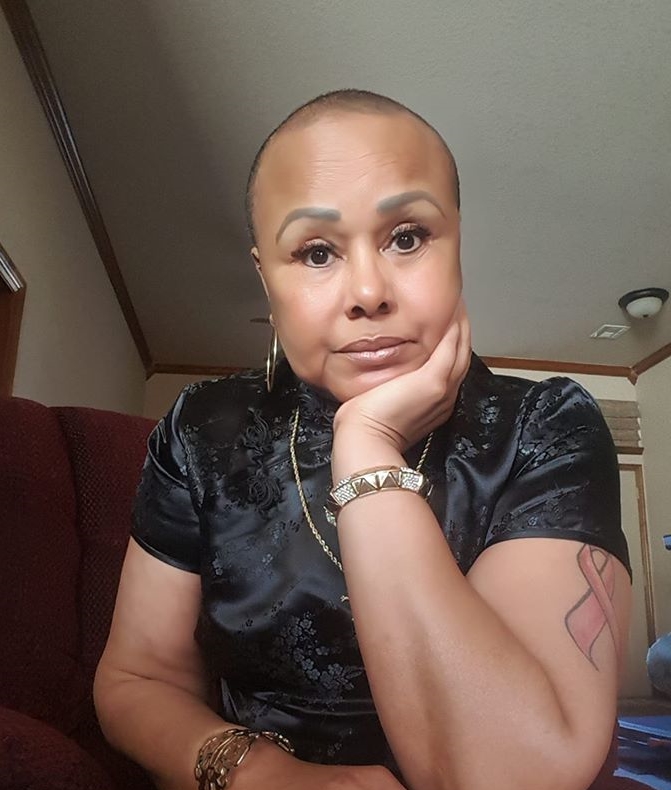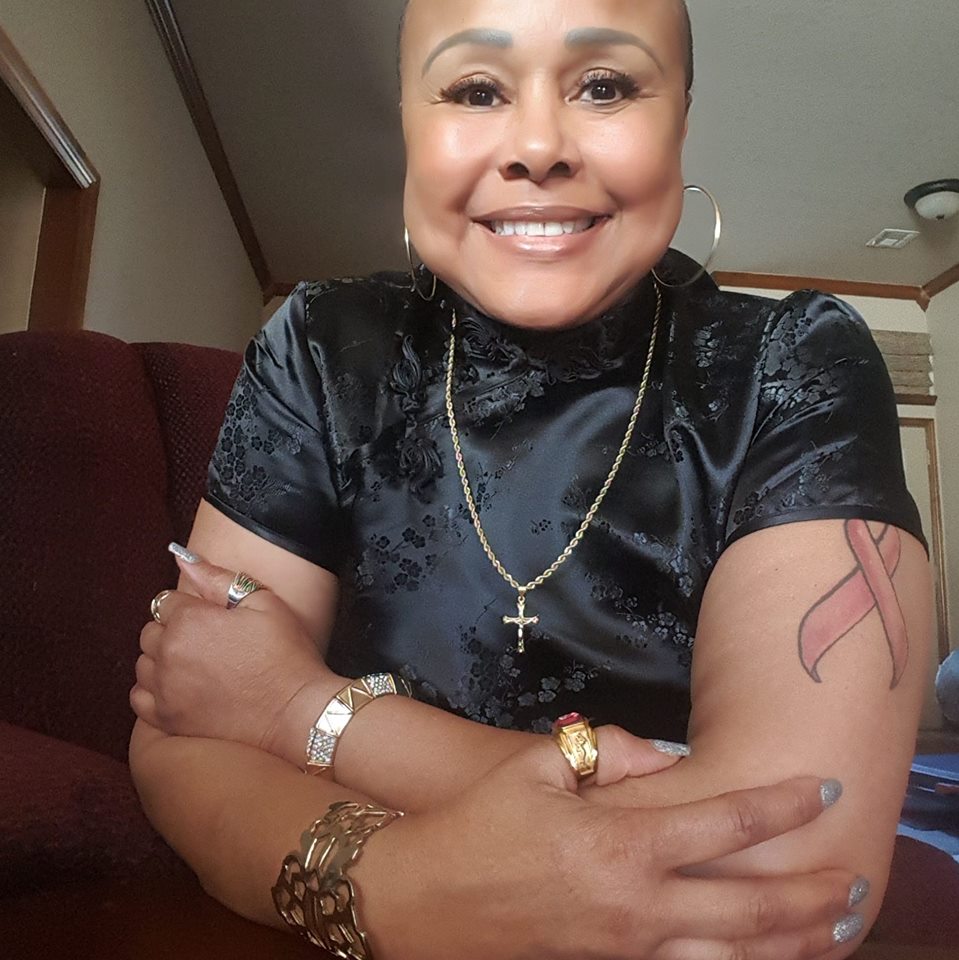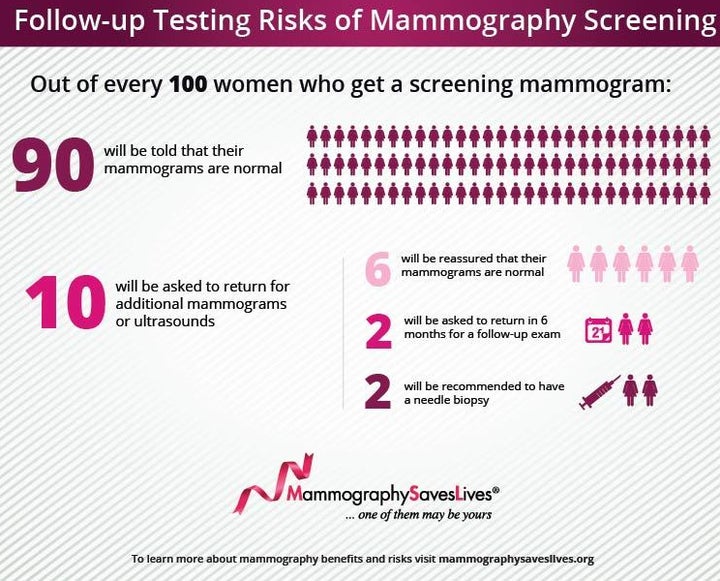

Roughly two-thirds of African-American women report getting a mammogram in the last two years. However, we may not get screened as often as we say. Our cancers are still found at a later stage than white women. We are more likely to die from breast cancer. We also die from breast cancer at a younger age than whites. This may be because we wait longer between mammograms and don’t quickly follow up when something is found. We can do better.
Mammograms Are Not Perfect (No Test Is)
Mammography will not find every cancer. It will also find things that prove not to be cancer.
“False Positives” Happen
Some women will be asked to come back for another test to confirm or rule out cancer. If that test rules out cancer, many call the result of the first mammogram a “false positive.” Some say this process — and anxiety we may feel as a result — is a reason to not screen women for breast cancer (or not start at age 40).
As the infographic below from MammographySavesLives.org shows, such risks have been overplayed.

False positives are not overly common. Anxiety about test results is normal, but missing a cancer that kills thousands each year is a greater concern.
Overdiagnosis Is Overblown
“Overdiagnosis” means finding a breast cancer that would not grow to kill you. Only a few percent of cancers may fit this description. Medical science can’t yet tell which cancer will kill and which won’t.
The only way to know is NOT treat the cancer and see if it kills you. Sound good?
Barring a “miracle,” invasive breast cancers do not go away or shrink if left untreated. It is only a matter of time before these cancers kill.
Black Women Are More Likely To Have “Dense Breasts”
We are more likely to have dense breast than white women. Your breasts are considered dense if you have a lot of fibrous and glandular tissue but not much fat.
Having dense breasts may increase your risk of getting breast cancer. Dense breasts make it harder to spot cancer on mammograms. Dense tissue appears white on a mammogram. Cancer also appear white. So, mammograms can be less accurate in women with dense breasts.
The American College of Radiology has created a great brochure on this at MammographySavesLives.org. Another source for information is BreastDensity.info.
Some Women With Dense Breasts May Need Different Tests
A mammogram is the only imaging screening test proven to reduce breast cancer deaths. Many cancers are seen on mammograms even if you have dense breast tissue. However, studies have shown that ultrasound and MRI can help find cancers that can’t be seen on a mammogram.
But these tests show more findings that are not cancer too. This can result in added testing and unnecessary biopsies. Also, the cost of ultrasound and MRI may not be covered by insurance. Talk to your doctor about which (if any) additional tests are right for you.
What Is New “3D Mammography”?
Digital Breast Tomosynthesis (DBT), or 3D mammography, is an advanced mammogram that takes multiple small images so the breast can be viewed in layers. This can allow a better look through the tissue to see any abnormalities, especially in dense breasts.
A major study in the Journal of The American Medical Association shows that tomosynthesis use significantly improves cancer detection and cuts down on “false positives.”
A new large study called the “Tomosynthesis Mammographic Imaging Screening Trial” or “TMIST” is just underway. The study would find out if 3D mammography reduces breast cancer deaths more than standard digital mammography. The trial will also see if 3D mammography is better at spotting more aggressive cancers that quickly grow to kill the person.
Only about 42 percent of mammography facilities across the U.S. offer 3D mammography. The number of facilities offering 3D mammography is growing steadily. However, not all insurers cover 3D mammography.
What Can Black Women (And Others) Do?
Please follow the advice of the American College of Radiology (ACR) and the Society of Breast Imaging (SBI). Get a mammogram every year starting at age 40. If you have a close relative (mother, sister, etc.) who has had breast cancer, talk to your doctor about getting tested earlier. Also ask your breast center or your doctor about 3D mammography and, “Do You Need A 3D Mammogram?”
Breast cancer deaths have dropped about 40 percent since widespread mammography screening started in the mid-1980s. But the death rate has been cut nearly in half in European countries like Denmark and Sweden where screening is more organized.
If more women in the U.S. get annual mammograms, we can save many more lives. And treatment for cancers found can be much less extensive and expensive for many women.
Share this post with your family and friends so they too can get informed, be involved and take action.
For more information on mammography screening beginning at age 40, visit MammographySavesLives.org.
For more information on the screening tests I have mention National Breast Cancer










